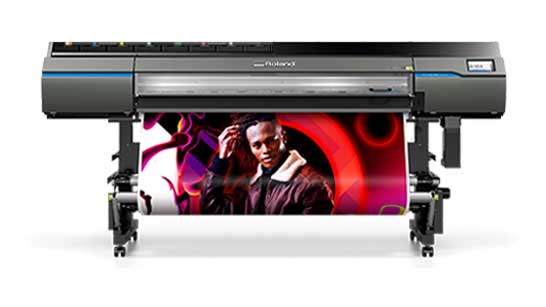How Digital Printing Can Help You Create Stunning, High-Quality Visuals for Your Brand
Comprehending the Importance of Digital Printing in Today's Affordable Landscape
In the context of today's extremely affordable market, the value of electronic printing can not be overlooked. As companies seek to improve their approaches, understanding how digital printing integrates into broader advertising and marketing and operational goals is vital. What ramifications does this have for future service methods and customer partnerships?
Advantages of Digital Printing
Digital printing provides a number of considerable advantages that make it a preferred choice for many organizations and people. One of the most notable benefits is its capacity to create top notch prints with vivid shades and elaborate details. This is specifically vital for advertising and marketing materials, where visual allure can significantly influence customer involvement.
Additionally, electronic printing helps with fast turnaround times, enabling organizations to respond rapidly to market needs or marketing opportunities. Unlike traditional printing approaches that need extensive arrangement and longer manufacturing times, digital printing permits instant result, making it excellent for time-sensitive jobs.
Customization is an additional essential benefit of digital printing. It sustains variable data printing, which enables individualized content in each print run. This attribute is especially beneficial for straight marketing campaigns, where customized messages can improve customer connection and boost reaction prices.
In addition, electronic printing decreases waste by permitting little print runs without sustaining substantial costs. This ability not just supports sustainability efforts yet additionally offers versatility for organizations to test new designs or products without dedicating to huge amounts.
Cost-Effectiveness and Efficiency
The cost-effectiveness and efficiency of digital printing make it an appealing choice for organizations looking to optimize their printing processes. Unlike conventional printing techniques, which commonly call for extensive setup and large print runs to justify costs, digital printing allows for much shorter runs without giving up top quality. This adaptability dramatically reduces waste and inventory expenses, allowing organizations to print just what they require, when they require it.
In addition, electronic printing lessens the turn-around time for tasks. With automated procedures and on-demand abilities, companies can respond promptly to market needs, consequently improving their one-upmanship. The removal of pricey pre-press phases, such as plate development and long arrangement times, even more contributes to functional performance.
Additionally, digital printing technologies have advanced, leading to reduced per-unit costs over time. As an outcome, electronic printing ends up being not just a practical option however also a calculated financial investment in a rapidly advancing marketplace.
Personalization and Customization
In today's competitive landscape, the capacity to provide modification and customization in printing has ended up being a critical differentiator for companies. Digital printing technology enables companies to develop tailored products that satisfy certain consumer requirements and choices. By leveraging variable data printing, business can create products that include unique text, photos, or designs for every recipient, improving the importance and influence of marketing efforts.
This ability not only promotes a deeper connection with clients however likewise allows organizations to attract attention in a crowded marketplace. Customized pamphlets, straight mail campaigns, and promotional items can lead to higher involvement prices and boosted consumer commitment. Additionally, the adaptability of electronic printing helps with brief runs and quick turn-around times, permitting businesses to respond promptly to market patterns or private customer demands.

Environmental Influence
As services increasingly concentrate on personalization and personalization to improve client involvement, attention must additionally transform to the environmental effects of printing practices. Digital printing supplies several benefits in this context, mainly via its ability to lower waste and reduce source consumption. Unlike traditional printing approaches that typically call for substantial arrangement and create substantial excess materials, electronic printing allows on-demand production. This ability permits companies to print just what is necessary, thus lowering overproduction and associated waste.
In addition, improvements in digital printing technology have actually brought about using environmentally friendly inks and substrates. Water-based and vegetable-based inks are coming to be extra prevalent, lowering the emission of volatile organic compounds (VOCs) and enhancing recyclability. Furthermore, many digital printers are designed to be energy-efficient, consuming less official source power throughout procedure contrasted to their standard counterparts.
The shift towards sustainable practices is not merely a governing response; it is additionally a critical business decision. Companies that adopt eco liable printing procedures can enhance their brand image, interest eco-conscious customers, and add to wider sustainability goals. In this affordable landscape, incorporating ecological considerations into printing methods is vital for long-lasting success and corporate duty.
Future Fads in Digital Printing
Emerging technologies are positioned to reinvent the landscape of electronic printing, driving advancement and effectiveness in the industry. As advancements in expert system and artificial intelligence remain to develop, the capability to automate processes and boost personalization will come to be a foundation of digital printing (digital printing). These modern technologies will allow printers to analyze customer data, enabling highly personalized print items that cater to certain market demands
In addition, the combination of 3D printing within traditional digital printing structures is expected to develop new opportunities for product growth. This convergence will certainly facilitate the production of elaborate layouts and prototypes a lot more rapidly and cost-effectively than ever.
Sustainability will likewise play a vital role fit the Going Here future of electronic printing. As ecological issues intensify, environmentally friendly inks and substratums are prepared for to acquire grip, advertising a greener printing process.
Additionally, the surge of on-demand printing will certainly shift the focus from large manufacturing runs to smaller, a lot more adaptable orders, reducing waste and stock prices. Jointly, these fads signal a transformative era in digital printing, highlighting flexibility, efficiency, and environmental consciousness in meeting the needs of an advancing marketplace.
Final Thought

The cost-effectiveness and performance of electronic printing make it an appealing option for organizations looking to maximize their printing procedures. Unlike standard printing methods, which often call for substantial configuration and large print runs to warrant expenses, digital printing permits for much shorter runs without sacrificing top quality. The versatility of digital printing promotes short runs visit the site and rapid turn-around times, allowing businesses to react quickly to market fads or individual customer requests.
Unlike typical printing techniques that frequently call for comprehensive setup and create substantial excess materials, electronic printing enables on-demand manufacturing. As digital printing proceeds to progress, its function in driving innovation and operational performance will be critical for companies looking for to maintain a competitive side.